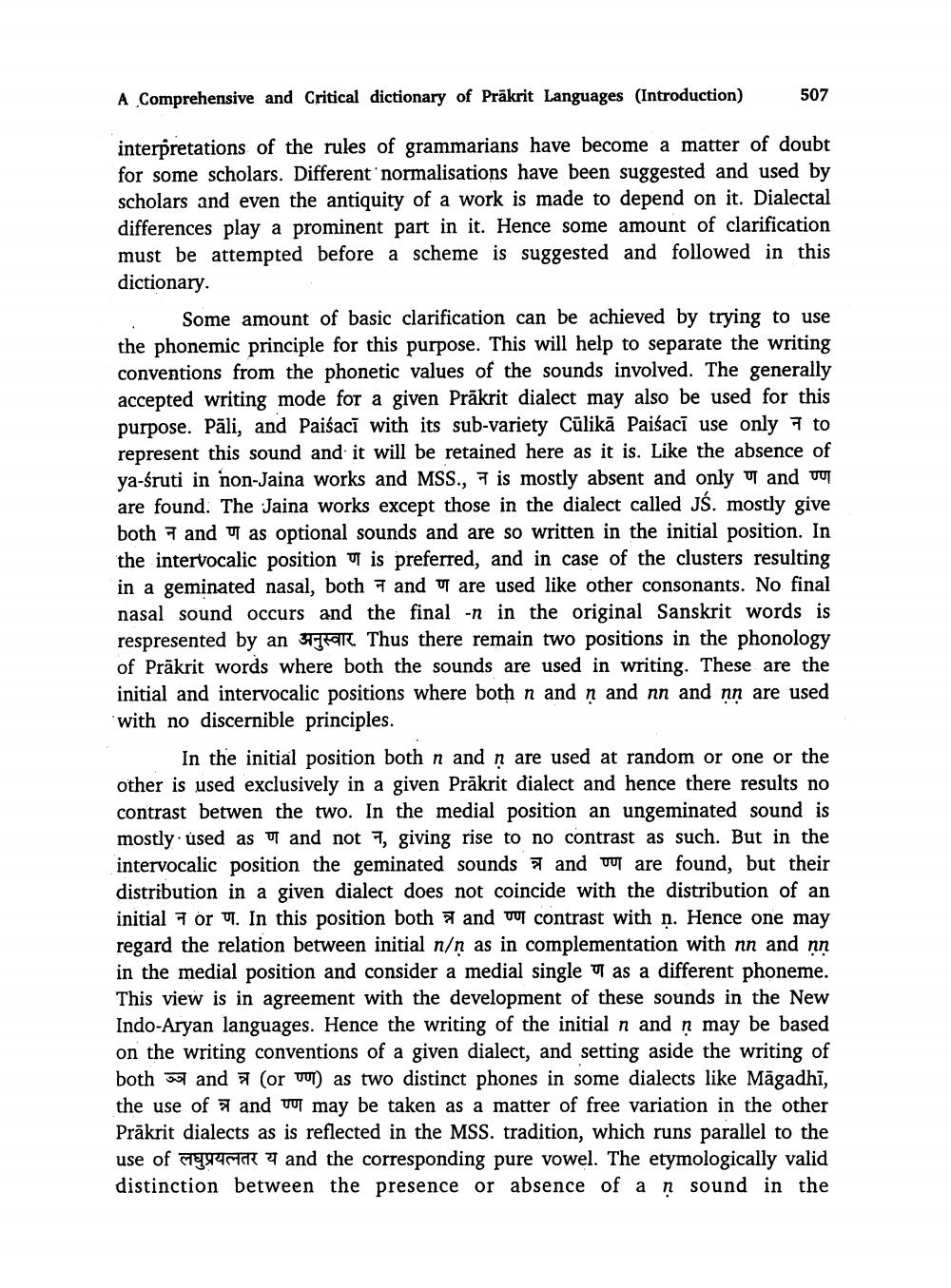________________
A Comprehensive and Critical dictionary of Prākrit Languages (Introduction)
507
interpretations of the rules of grammarians have become a matter of doubt for some scholars. Different normalisations have been suggested and used by scholars and even the antiquity of a work is made to depend on it. Dialectal differences play a prominent part in it. Hence some amount of clarification must be attempted before a scheme is suggested and followed in this dictionary.
. Some amount of basic clarification can be achieved by trying to use the phonemic principle for this purpose. This will help to separate the writing conventions from the phonetic values of the sounds involved. The generally accepted writing mode for a given Prākrit dialect may also be used for this purpose. Pāli, and Paisacī with its sub-variety Cūlikā Paisacī use only 7 to represent this sound and it will be retained here as it is. Like the absence of ya-śruti in non-Jaina works and MSS., 7 is mostly absent and only u and to are found. The Jaina works except those in the dialect called JŚ. mostly give both 7 and u as optional sounds and are so written in the initial position. In the intervocalic position is preferred, and in case of the clusters resulting in a geminated nasal, both 7 and u are used like other consonants. No final nasal sound occurs and the final -r in the original Sanskrit words is respresented by an 3769r. Thus there remain two positions in the phonology of Prākrit words where both the sounds are used in writing. These are the initial and intervocalic positions where both n and n and nn and nn are used with no discernible principles.
In the initial position both n and n are used at random or one or the other is used exclusively in a given Prākrit dialect and hence there results no contrast betwen the two. In the medial position an ungeminated sound is mostly used as U and not 7, giving rise to no contrast as such. But in the intervocalic position the geminated sounds and uut are found, but their distribution in a given dialect does not coincide with the distribution of an initial 7 or u. In this position both 5 and vel contrast with n. Hence one may regard the relation between initial n/n as in complementation with nn and nn in the medial position and consider a medial single 17 as a different phoneme. This view is in agreement with the development of these sounds in the New Indo-Aryan languages. Hence the writing of the initial n and n may be based on the writing conventions of a given dialect, and setting aside the writing of both and a (or vu) as two distinct phones in some dialects like Māgadhi, the use of 7 and vu may be taken as a matter of free variation in the other Prākrit dialects as is reflected in the MSS. tradition, which runs parallel to the use of a 9 and the corresponding pure vowel. The etymologically valid distinction between the presence or absence of a n sound in the




